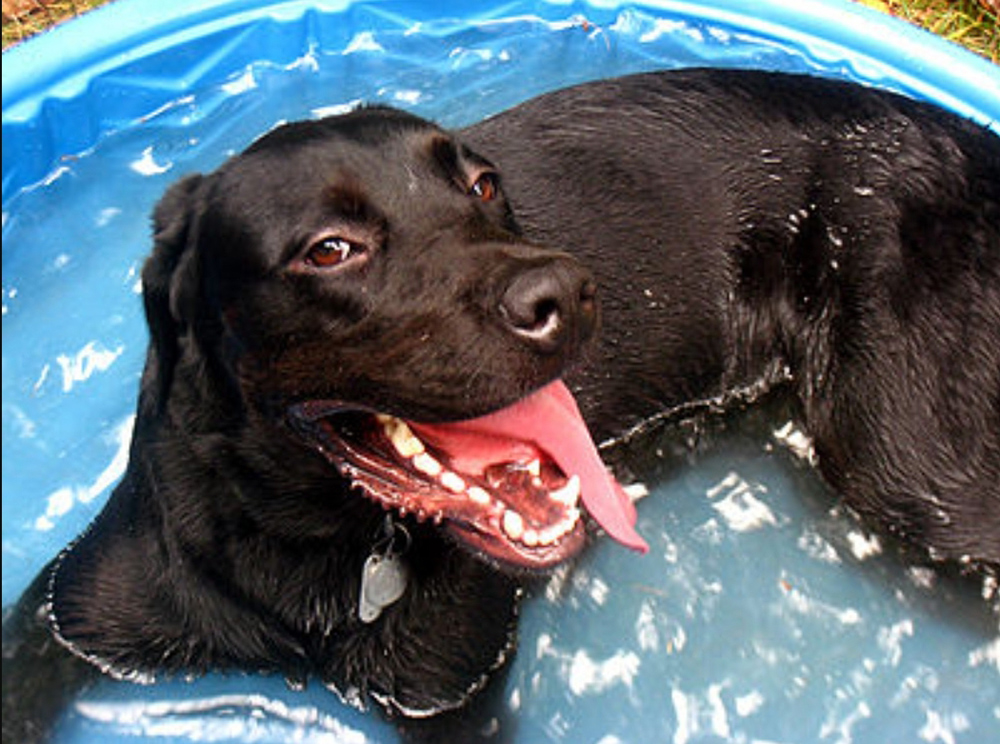By Heidi Clayton
I feel like one should not have to be reminded not to leave your dog locked in a car with the windows up in the heat. Yet every summer, there are news reports of a dog or, even more shocking, a child being forgotten in the backseat of a car in the middle of a heatwave. So in case you were not aware, it is never a good idea to leave your child or dog in a car with the windows rolled up in the heat. Especially on days when the New Jersey humidity can make the temperatures feel like they’re up in the 90s, leaving a dog in the car with the windows down can lead to a heat stroke or death.
I have seen a heat stroke in a dog just once in my life, and it was scary how quickly it seemed to overtake the dog. A boxer at a dog show that seemed to be doing nothing more than drooling and panting started staggering a bit before falling over and collapsing. Another handler’s quick thinking saved the dog’s life. Cool water was rubbed on the dog before it was whisked off to the ER. It was scary for everyone to watch and terrifying for the dog’s owner.
Signs of a heat stroke in dogs can start with simple excessive panting and drooling. This is often accompanied by a bright red tongue, which will turn a grayish color when full-blown heat stroke kicks in. Vomiting or diarrhea may also occur. The dog becomes unsteady on their feet or appears disoriented.
The normal body temperature for a dog is about 100.5 to 102.5 degrees. If you are at home, you will most likely have access to a thermometer to take a rectal temperature. Outside of the house, most people will not have a thermometer on hand. A body temperature in dogs of about 104-106 degrees is considered heat exhaustion. Anything above 107 is an actual heat stroke. A full-blown heat stroke can lead to collapse, seizures, a coma, organ failure or death.
If you think your dog is suffering from a heat-related medical emergency, the first thing to do is get them out of the heat, if possible, and into a well-ventilated shady area. Use cool water or a cloth soaked in cool water to rub your dog with, focusing on the belly area. Avoid using ice-cold water, which could result in shock. Being able to take the dog’s temperature is key when ensuring that the dog is recovering from the episode.
Personally, if I ever have a dog that I think is having a heat-related issue, I would take that dog to the ER to ensure that they do not need IV fluids, medication, or any other support.
The best way to combat heat stroke in dogs is to not let it happen. If you are taking your dog out for prolonged periods of time during the summer months, always bring your own supply of water with you. This particularly applies to trips to the beach so that they don’t ingest salt water when thirsty. I have invested in “cool coats” that are soaked in cool water and frozen. I put them on my dogs when we are showing in the heat to keep them comfortable. I also have shade cloth for my crates and portable fans that clip to the front of my crates.
Our dogs love summer as much as we do. Many will play outside for as long as we let them. Be your dog’s advocate. Keep them cool and safe by preventing a heat-related incident before it happens.
If you have any questions about protecting your dogs from the heat, please feel free to email me at heidi@fouronthefloordogtraining.net.
Heidi Clayton started Four On the Floor Dog Training to provide positive, reward-based dog training in South Jersey. She breeds, trains and shows bull terriers under the SoraBully’s Bull Terriers kennel name. Email questions to heidi@fouronthefloordogtraining.net or learn more at https://fouronthefloordogtraining.net










